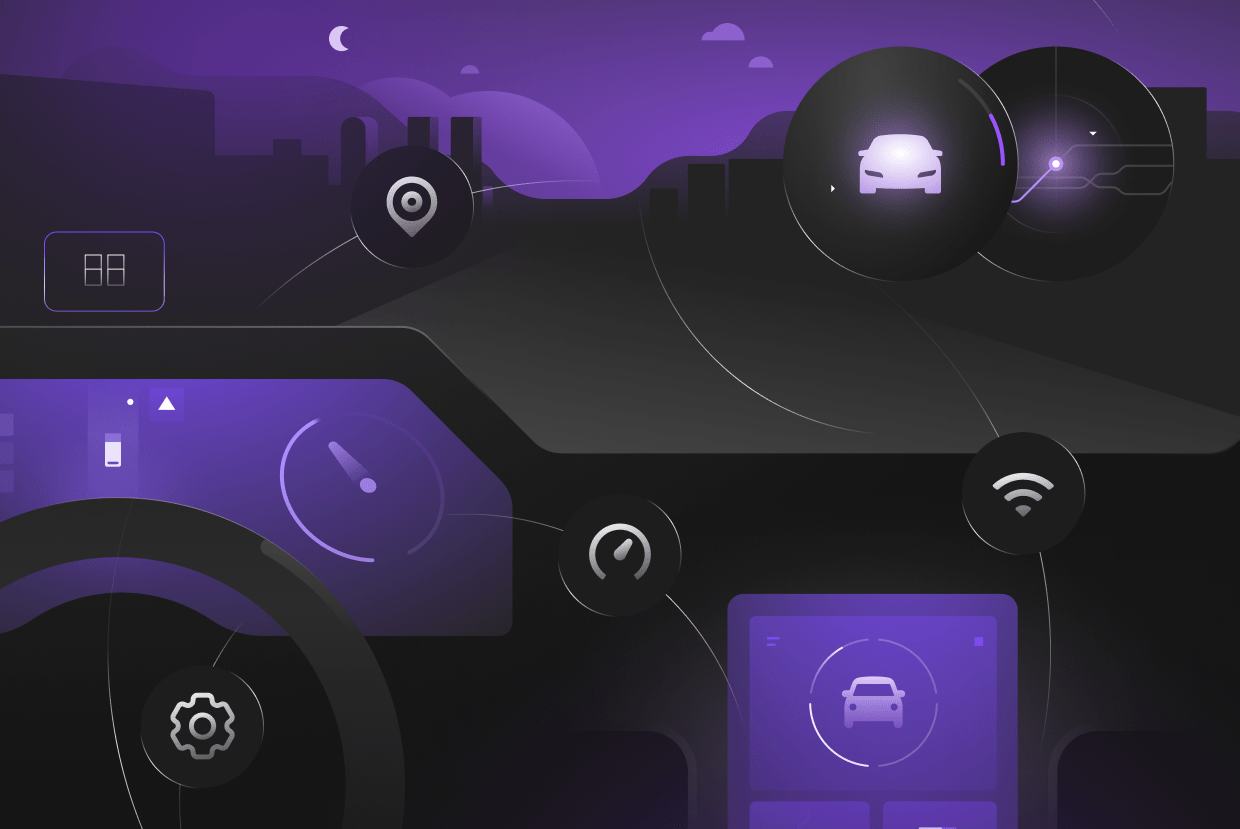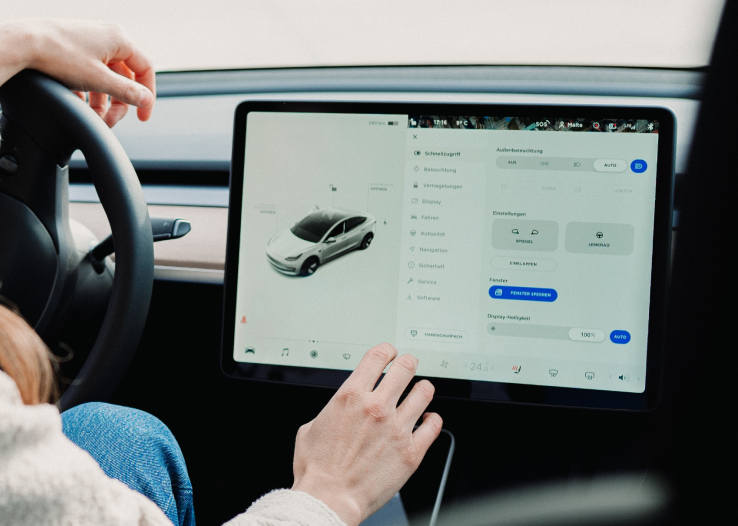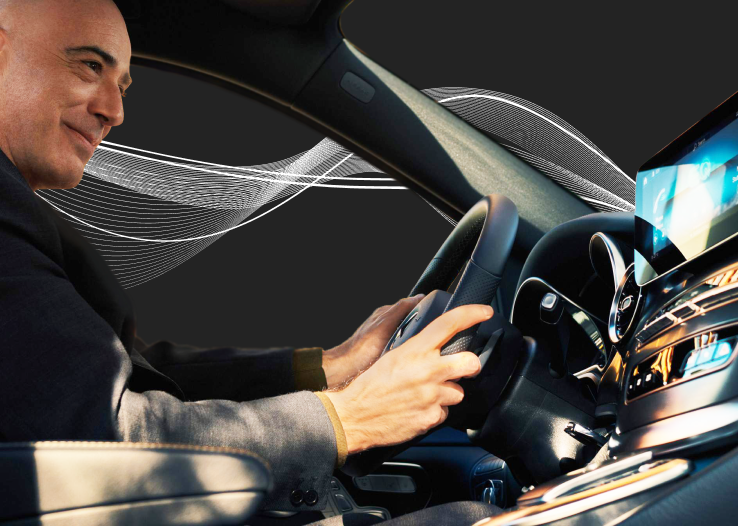The car you’re designing is socially awkward
Why are cars always honking?
When you’re a nearby pedestrian absorbing 100dB, do you ask yourself: Does this car really need my attention? Is this really helping anybody? And why are cars always so mean to me?
Today, there are more creative vehicle ideas than ever — from car-bike-hybrids to people movers, to cyber trucks. In part, these ideas are inspired by self-driving technology, where vehicle-to-vehicle (V2V) communication is automatic and, thankfully, silent.
On the other hand, new city planning favors people over cars. This means that cars are in closer and closer proximity to bikes, electric scooters and pedestrians.
In this increasingly multi-modal and car-skeptical environment, cars need better ways to communicate with the outside world. In short, cars need a new ‘language’, a new method of vehicle-to-pedestrian, or -person (V2P) communication. Otherwise, cars risk cementing their role as the bull in the China shop of modern cityscapes.
So, what will this new method of car communication sound like?
Our framework for vehicle communication
Star has worked in automotive for a while, defining new ways for cars and people to communicate. For intuitive communication within the vehicle, we’ve co-created Nomi, an award-winning robot companion.
Now, while working on outward-facing car language, we came up with a simple yet useful framework. It’s based on two axes: potential danger (How risky is this situation?) and signal intensity (How strongly is the car communicating to the outside world?)
Combining the two axes, you get four quadrants: Ambience (low risk, weak signal); Spectacle (low risk, strong signal); Pitfall (high risk, weak signal); and Alarm (high risk, strong signal).
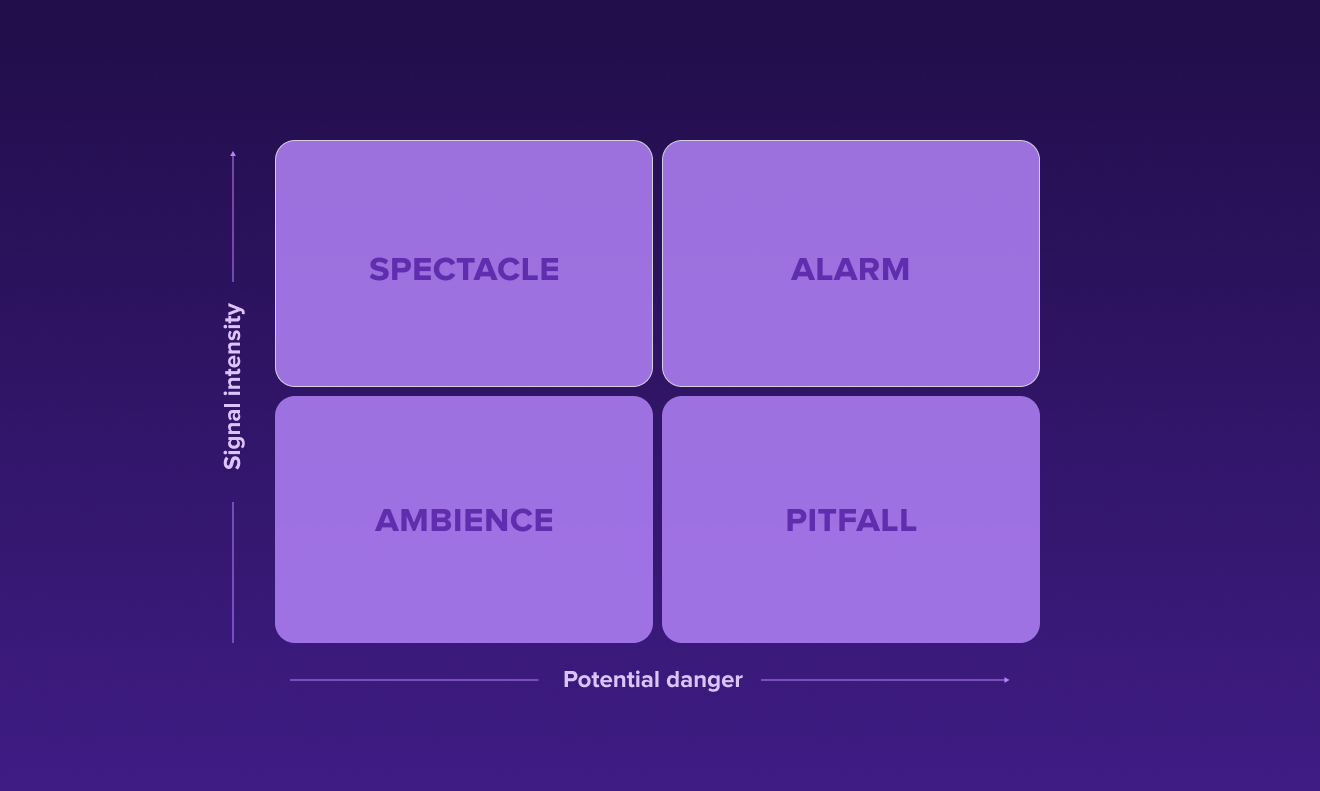
Traditional car communication
The car language we know today has evolved over the past century or so. And even if some of the audiovisual signals, like indicators, may have initially been counter-intuitive, they are well-known today.
Let’s take the perspective of a pedestrian or cyclist. (Also, for the sake of simplicity, let’s neglect proximity.) When we place some traditional signals in our framework, we get this...
The Ambience quadrant is filled with background traffic noise: You’re in no danger, but you might consider putting your dog on a leash.
The Spectacle quadrant offers ample room for drivers’ self-expression: You get the attention you want. But do people really need to know how you feel?
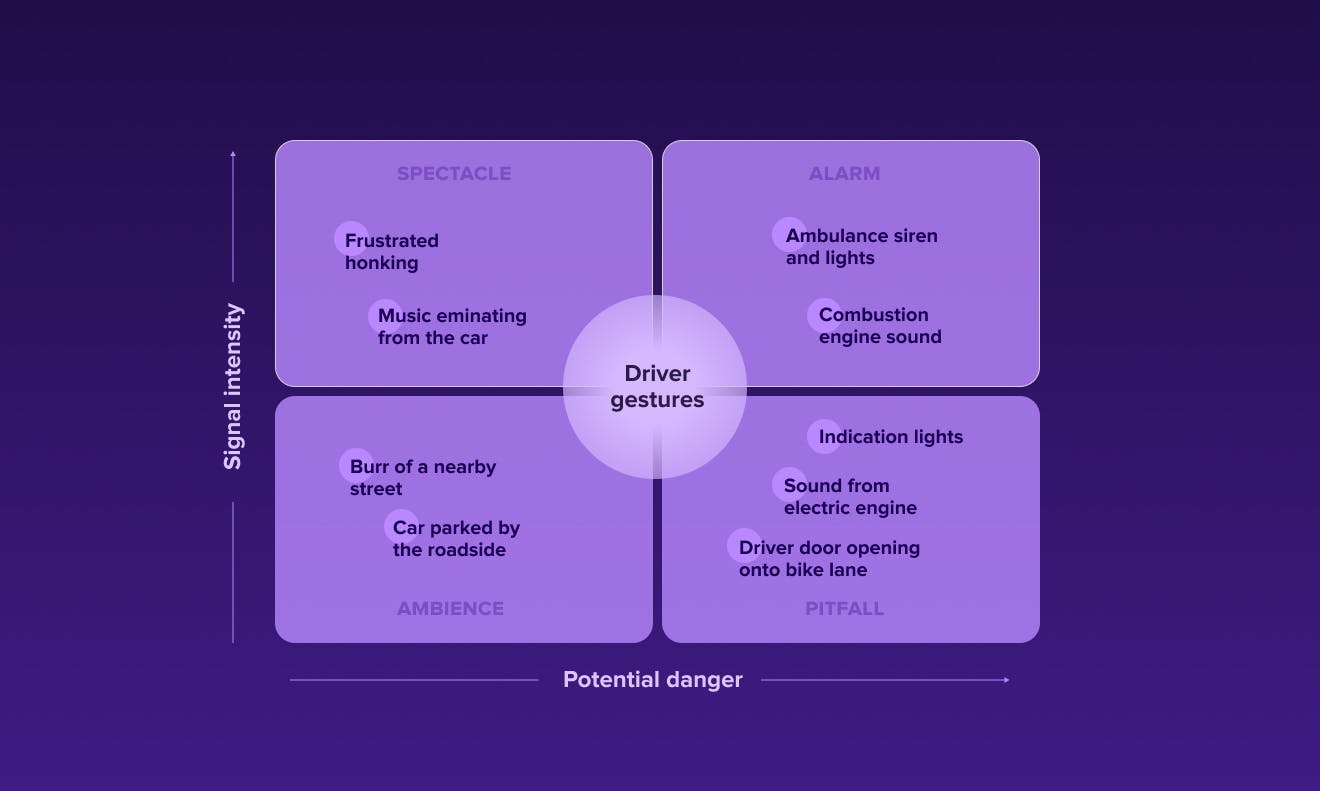
The Pitfalls quadrant remains a source of fatality: You didn’t see it coming. And then suddenly…!
And lastly, the Alarm quadrant is largely monopolized by the authorities. You can spot them from a distance, and they usually have a good reason to bother you.
This shows that today’s car communication system covers the entire framework quite evenly. And at the center of it all, the drivers flexibly adjust their tone and gestures — from courtesy to road rage.
Tonal fine-tuning
Languages are alive. And in some cases, today’s car language is still being refined. Mumbai punishes honking with red traffic lights. Sound-absorbing trees or speed limits muffle general street noise. And electric cars emit synthetic engine sounds to warn pedestrians.
But some pitfalls still remain unresolved, like a driver door opening onto the bike lane: While the visual signal is brief and subtle, the consequences for the cyclist can be dire.
While these are important incremental adjustments, traditional car communication has evolved under the assumption that people operate cars, within a car-heavy environment.
As mentioned above, these assumptions are becoming increasingly obsolete. And this is what has prompted innovations for new vehicle-to-pedestrian communication systems.
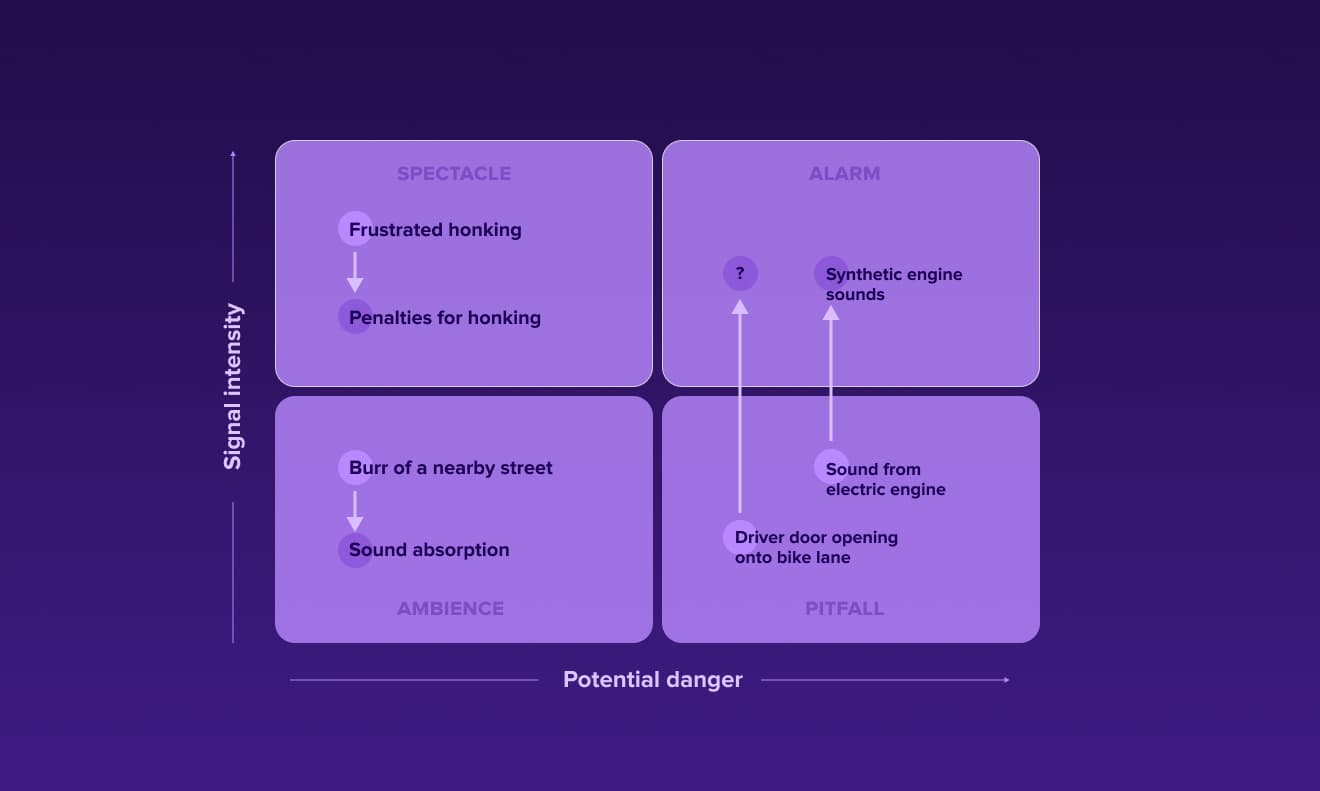
A new vehicle-to-pedestrian language
In recent years, there has been a veritable Cambrian Explosion of new modes, symbols and media for vehicle-to-pedestrian communication. This has been brought about by multiple factors, including new urban mobility concepts and the advent of autonomous driving.
Self-driving cars will create a signal vacuum behind the steering wheel where the driver used to be. This is problematic because, besides actual driving, the driver today is a key channel for the car’s communication. So, one question that many car designers ask themselves is: How can an approaching level-5 car notify pedestrians when it is safe to cross the street in front of them?
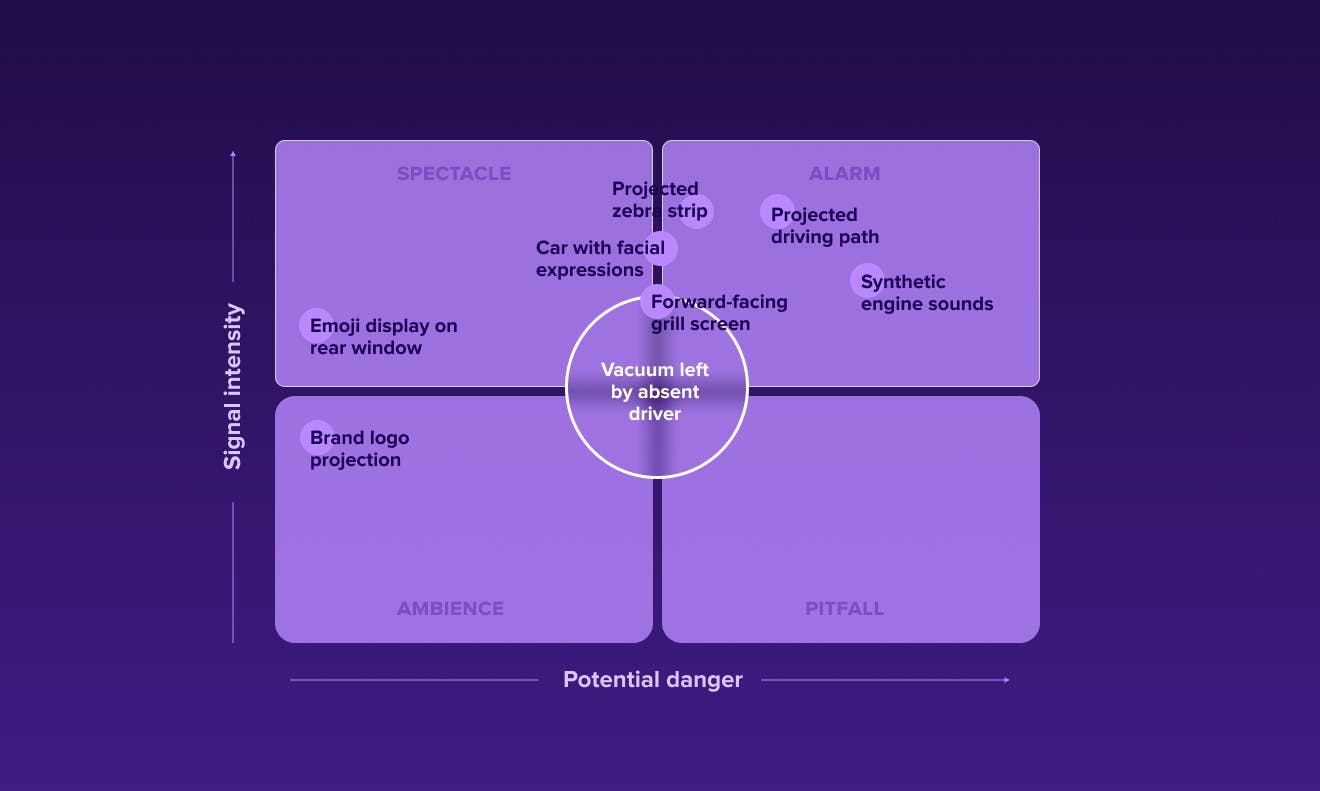
Looking at the framework, most of the resulting concepts err on the side of more intense signaling. Presumably, this technical over-compensation will persist until the new signals are more widely recognized, just like a driver waving a hand.
Sources from top left to bottom right: Emoji display by Mojipic | Projected zebra strip by Hyundai | Projected driving path by Waymo | Synthetic engine sound as legal requirement | Brand logo projection by Osram | Forward-facing grill screen by Google, Uber and Lyft
A socially appropriate communication system for the vehicle
In upcoming years, the industry will be filled with even more signals. So, which ones will be successful? Looking at our framework one last time, we believe that this is the distribution we’ll see.
Unnecessary spectacle will become harder for people to accept. The ambience signals will recede further into the background, to avoid noise and light pollution. In the center — once the driver’s domain — diversified audiovisual signals will mature and help people negotiate traffic safely. Authorities will keep their monopoly on the strongest alarm signals. And dangerous pitfalls will be matched with adequately strong signals. In short, you get socially appropriate car communication. As we see it, this model represents a vehicle communication system that is coherent and considerate of diverse traffic participants.
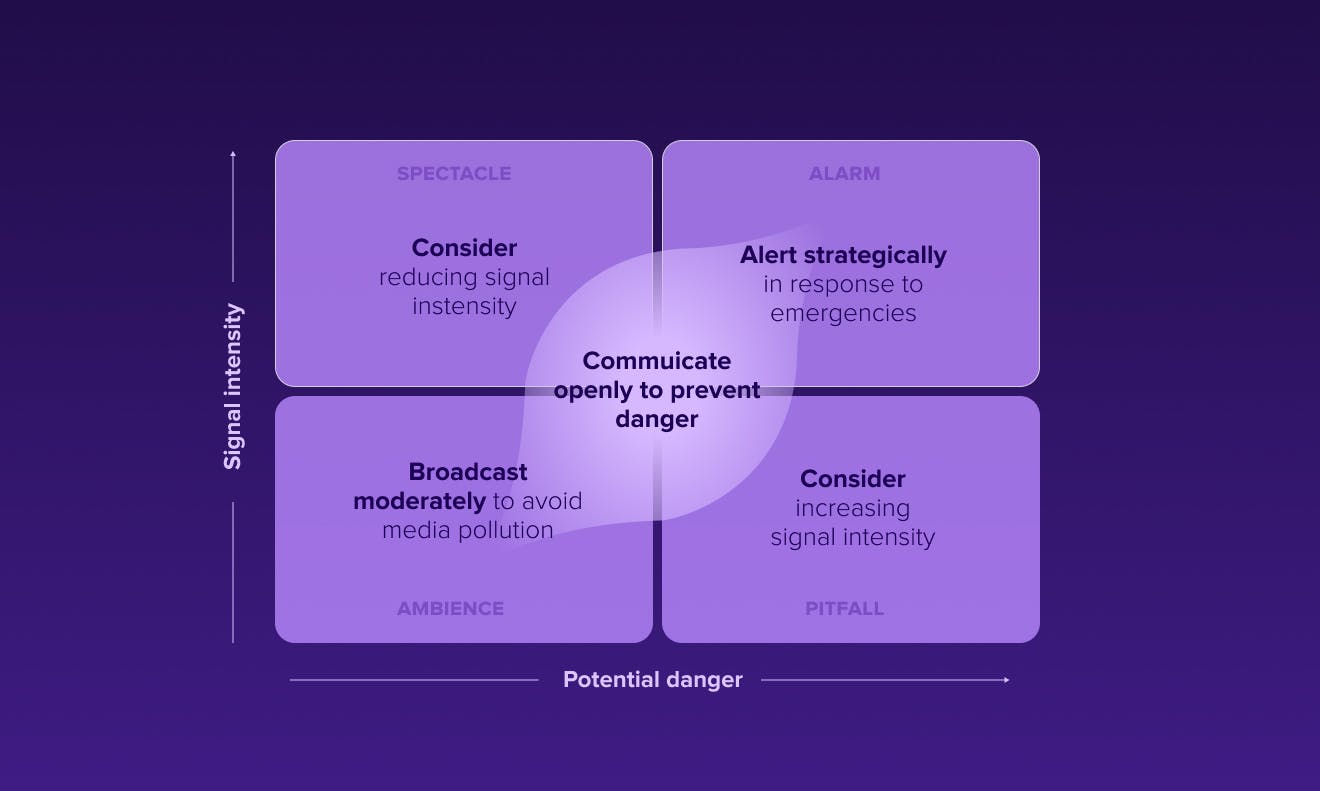
And now?
We hope this simple framework can also help you design your car communication.
Using it, you might answer some basic questions: How are the different signals of your car communication system distributed? Or: How could you help avoid pitfalls with adequate signaling?
But you might also ask more refined questions: How would your visual signal translate into an auditory one? Or: How does your signal’s intensity change depending on proximity?
Regardless of what question you pick — Together, let’s design a new car communication system that is safe, long-lived and socially valuable!
And maybe, we can even rethink the car horn.




